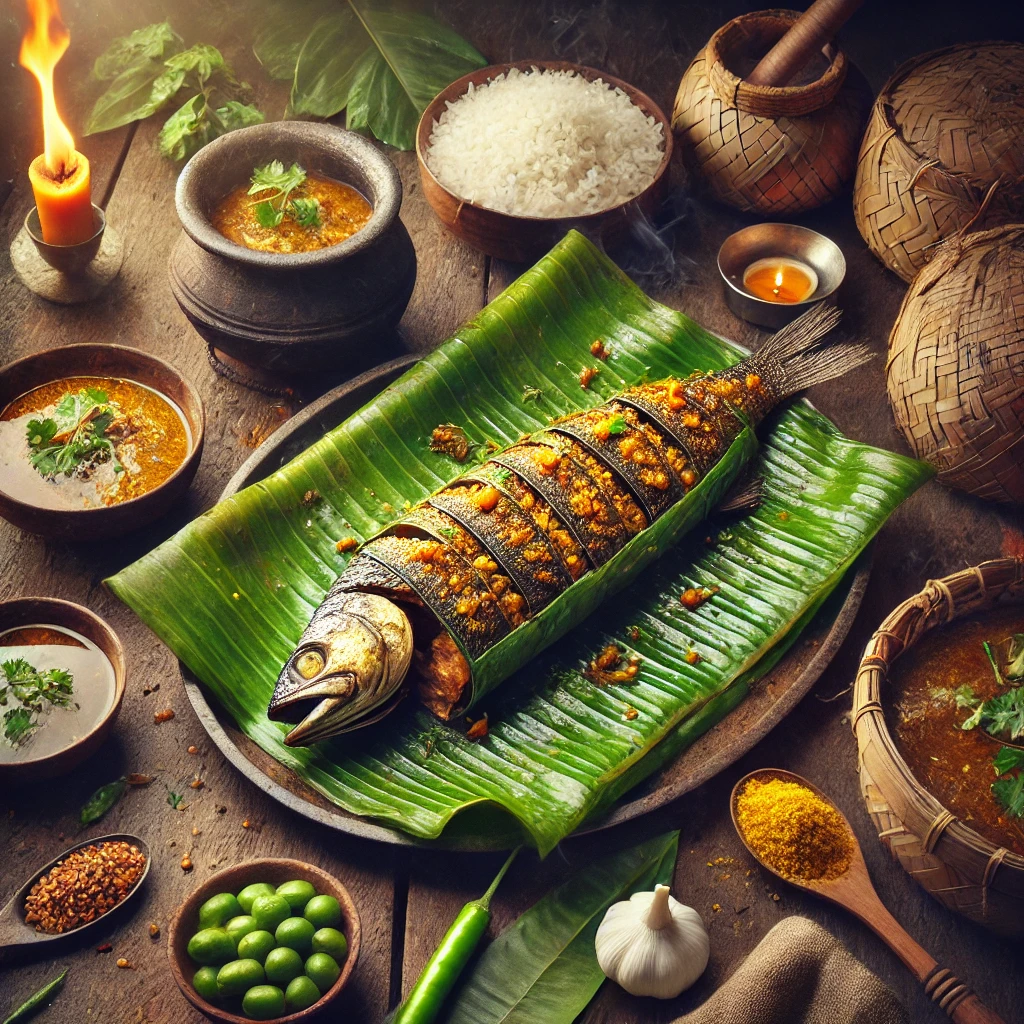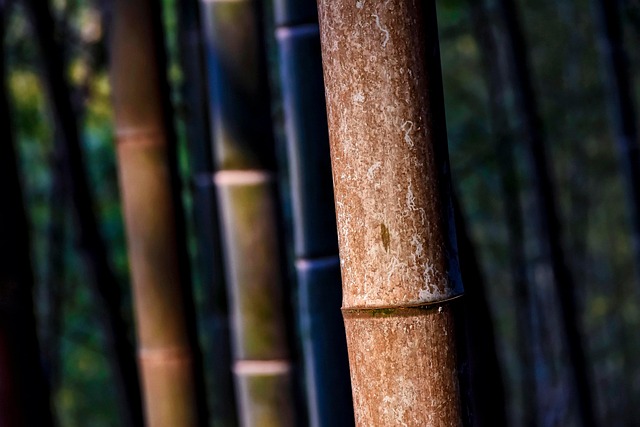Assamese cuisine is a treasure trove of authentic flavours, deeply rooted in tradition and nature. One of the most unique and loved dishes of this cuisine is Patot Diya Maas, a fish wrapped in banana leaves and cooked with minimal spices to bring out the authentic flavours of Assam. This dish is often served as part of a traditional Assamese Thali, where it complements a simple yet flavourful dish of rice, dal and local vegetables.
In this blog, we will tell you how to prepare Patot Diya Maas to enhance your Assamese thali experience.
Ingredients You Will Need
For an authentic Patot Diya Maas, here’s what you need:
- Fresh fish (preferably Rohu or Catla): 4-6 pieces
- Banana leaves: 2 large pieces, cut into squares for wrapping
- Mustard oil: 2 tablespoons
- Green chilies: 4-5, slit
- Ginger-garlic paste: 1 tablespoon
- Turmeric powder: 1 teaspoon
- Mustard seeds: 2 tablespoons (ground to a paste)
- Lemon juice: 1 tablespoon
- Salt: to taste
- Fresh coriander leaves: a handful, chopped
Preparation Steps
1. Prepare the Fish
Start by cleaning and washing the fish thoroughly. Once cleaned, marinate the fish pieces with salt, turmeric, and lemon juice. Let them sit for 15-20 minutes to absorb the flavors.
2. Grind the Mustard Paste
The key ingredient for Patot Diya Maas is the mustard paste, which adds a sharp, tangy flavor to the dish. Soak mustard seeds for 10-15 minutes and grind them into a fine paste along with 2-3 green chilies and a pinch of salt.
3. Prepare the Banana Leaves
Lightly roast the banana leaves over an open flame or stove to make them pliable. This prevents the leaves from tearing when you wrap the fish. Be careful not to burn the leaves—just a few seconds on each side will do.
4. Assemble the Fish Parcels
Place each marinated fish piece on a square of banana leaf. Coat the fish generously with mustard paste, add a dash of mustard oil, and place a slit green chili on top. Fold the banana leaf over the fish to form a secure parcel and tie it with kitchen string or a banana leaf strip.
5. Cook the Fish Parcels
Patot Diya Maas is traditionally cooked over charcoal or on a tawa (flat griddle). If you are using a tawa, heat it on low heat and place the banana leaves on it. Cover the tawa and cook for 10 to 15 minutes, turning the leaves occasionally to ensure even cooking. The banana leaves will burn slightly, giving the fish a smoky flavour.
6. Serve Your Patot Diya Maas
Once the fish is cooked, carefully open the banana leaf parcels. Serve the Patot Diya Maas hot as part of your Assamese Thali. Pair it with steamed rice, dal, and a side of mashed potatoes (aloo pitika) or a simple vegetable stir-fry for a wholesome meal.
Tips for the Perfect Patot Diya Maas
- Use fresh fish: The flavor of the dish is heavily dependent on the freshness of the fish.
- Banana leaves: Roasting the banana leaves is crucial to prevent them from breaking while wrapping.
- Adjust the mustard: If you prefer a milder flavor, you can mix the mustard paste with a bit of yogurt to balance the sharpness.
Why Patot Diya Maas is Special in an Assamese Thali
Patot Diya Maas stands out in the Assamese thali with its minimalist yet rich flavours. It is a perfect expression of Assam’s love for fresh, earthy ingredients and the delicate art of seasoning. Wrapping in banana leaves not only imparts a smoky aroma but also keeps the fish moist and tender.
Health Benefits of Patot Diya Maas
- Rich in Omega-3 Fatty Acids: Fish, especially Rohu and Catla, are excellent sources of Omega-3s, which are beneficial for heart health.
- Low in Oil: Since the dish uses mustard oil sparingly, it’s a light and healthy option for those watching their fat intake.
- Mustard Paste Benefits: Mustard seeds are known for their anti-inflammatory properties and can aid digestion.
Conclusion
Cooking Patot Diya Maas for an Assamese thali is a rich experience, offering a combination of simplicity, tradition and rich flavours. Whether you are hosting a special meal or just exploring new recipes, this dish will add an authentic flavour to your thali and is sure to impress.
So, next time you plan to make an Assamese thali, don’t forget to add some Patot Diya Maas and enjoy the delicious flavours of Assam at home!
Click :- www.nutritionalgrowth.com
Linkedin :- Click


